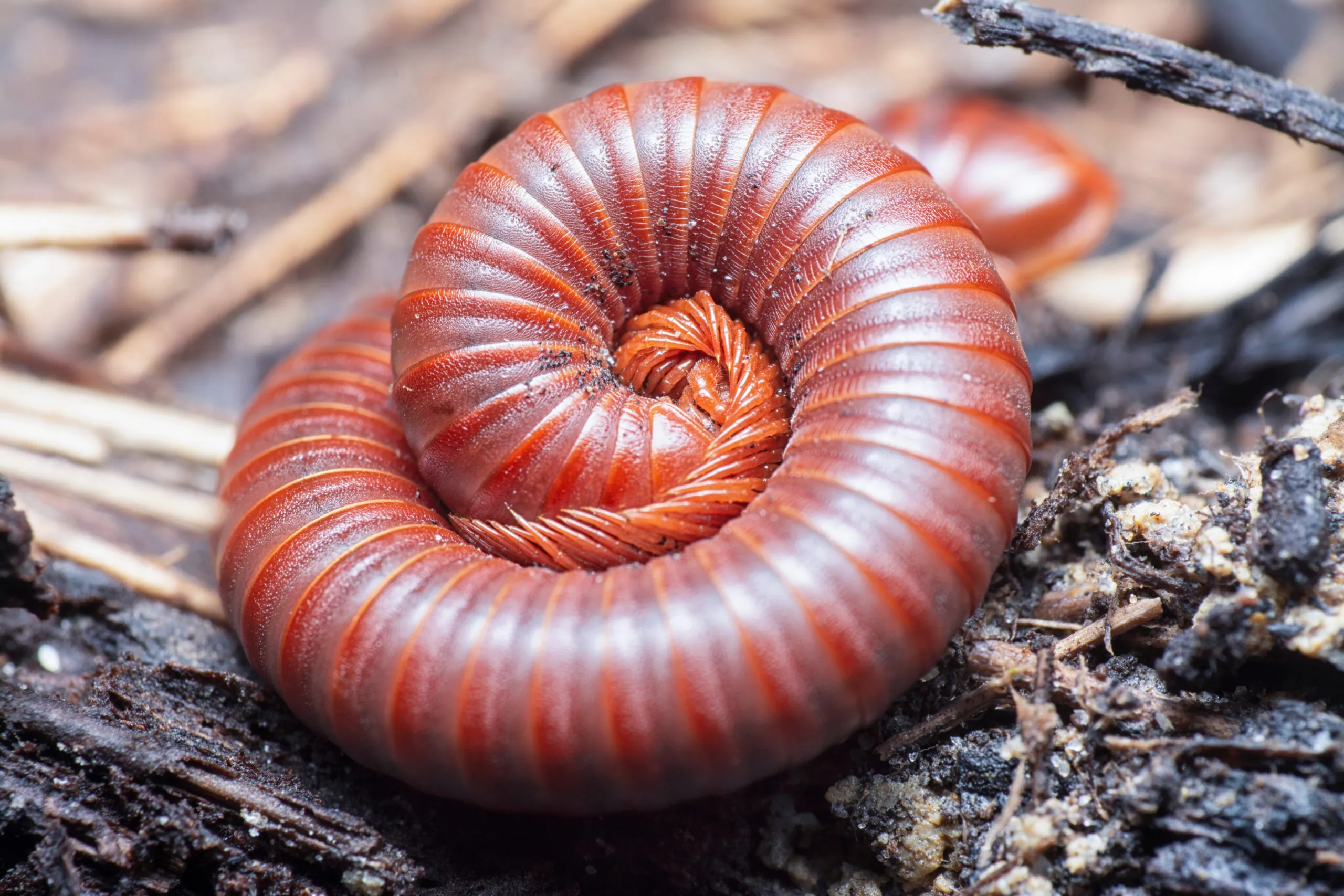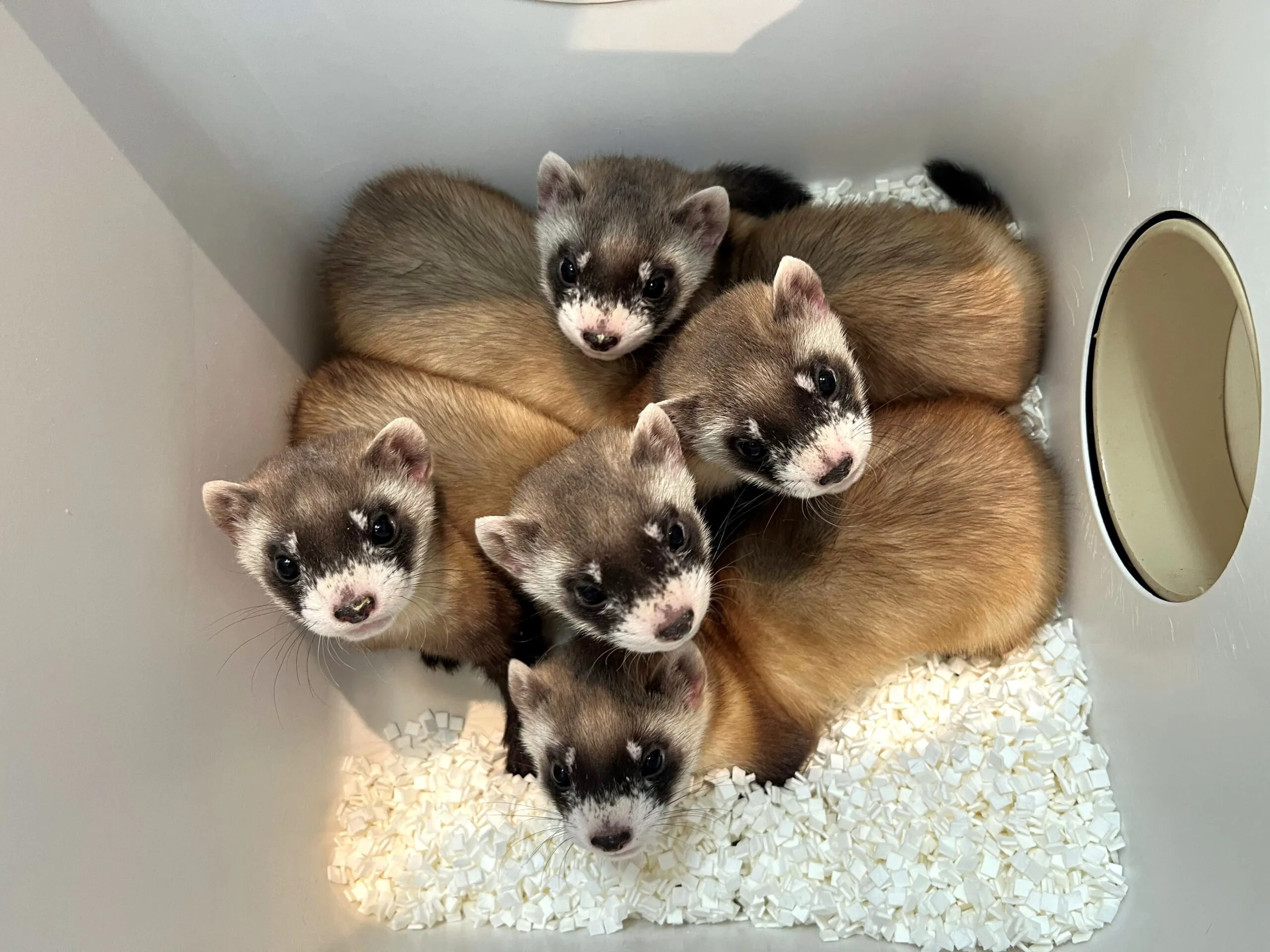Spirostreptus parilis
Millipedes
Diplopoda spp.
This species is not currently on view at the Phoenix Zoo.
Beneficial Bugs
Millipedes are decomposers; they eat decaying organic material like leaves, fruits or even dead animals. Decomposers are very important because they break down the nutrients in dead matter and return them to the soil as fertilizer. How, you ask? The answer is simple: POOP! That’s right, millipede poop is full of important vitamins and nutrients that plants need. Having decomposers like millipedes around keeps the plants healthy, which is a big part of keeping the whole ecosystem healthy.
Is That a Centipede?
There are several differences between centipedes and millipedes. Centipedes are generally faster and are hunters. Millipedes crawl slowly and don’t eat live prey. Centipedes have one pair of legs per body segment, while millipedes have two pairs per body segment. Centipedes are venomous, and millipedes are not. Millipedes can be poisonous though; their bodies may contain chemicals harmful to humans if ingested. Phoenix Zoo has desert and giant African millipedes in our ambassador animal collection.
Go Away
When threatened, millipedes coil into a defensive ball, and some will secrete foul-smelling chemicals to keep predators away. In Madagascar, lemurs have been observed purposely irritating millipedes to get them to secrete these chemicals, then rubbing them on their fur. Scientists aren’t sure why this happens, but it may work as an insect repellant, protecting the lemur from biting insects like mosquitos. Which raises the question, how did the lemurs figure that out? How many other animals did the lemurs irritate before they found one that repelled mosquitos?

Diet: detritus, plants, fungi, small invertebrates
Zoo Diet: starch, veggies, fruits, romaine
Habitat: soil, leaf litter, decaying wood
Length: .06 – 14 in

Trigoniulus corallinus
Plan your visit today!
The Phoenix Zoo is one of the largest non-profit zoos in the U.S., caring for over 3,000 animals, with nearly 400 species represented, including many threatened/endangered species.

Plan your visit today!
The Phoenix Zoo is one of the largest non-profit zoos in the U.S., caring for over 3,000 animals, with nearly 400 species represented, including many threatened/endangered species.








